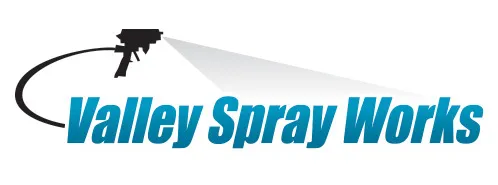Introduction
Commercial buildings endure constant exposure to weather, pollutants, and physical wear. Over time, these factors can cause deterioration, leading to costly repairs and structural weaknesses. Protective coatings provide a barrier that helps preserve surfaces, improve durability, and reduce long-term maintenance expenses. This article explores how these coatings extend a building’s lifespan, the various types available, and the benefits they offer for different surfaces.
How Protective Coatings Work
Protective coatings act as a shield, preventing environmental damage from moisture, UV radiation, and chemical exposure. These coatings are formulated to adhere to different materials, forming a tough layer that resists corrosion, fading, and surface degradation. By applying a high-quality protective layer, businesses can significantly reduce the impact of weathering and daily wear.
Types of Protective Coatings for Commercial Buildings
Several types of coatings are available, each designed to address specific threats to structural integrity. The right choice depends on factors like building material, climate, and exposure levels.
1. Elastomeric Coatings
These flexible coatings expand and contract with temperature changes, preventing cracks and leaks. They are commonly used on roofs and exterior walls to provide waterproofing and UV resistance.
2. Epoxy Coatings
Highly durable and resistant to chemicals, epoxy coatings are ideal for concrete floors and industrial facilities. They create a hard, seamless surface that withstands heavy foot traffic and mechanical stress.
3. Polyurethane Coatings
Polyurethane coatings offer excellent resistance to abrasion, impact, and UV exposure. They are often used on metal and wood surfaces to protect against weathering and corrosion.
4. Acrylic Coatings
These coatings are cost-effective and provide strong protection against moisture and fading. They are frequently used on masonry and stucco exteriors to maintain aesthetic appeal while preserving structural integrity.
5. Silicone Coatings
Silicone coatings are known for their waterproofing capabilities, making them ideal for flat roofs and areas prone to water accumulation. They resist ponding water and help extend roof life by preventing leaks.
Benefits of Applying Protective Coatings
Protective coatings do more than just enhance aesthetics—they provide long-term advantages that make them a smart investment for commercial properties.
1. Prevents Structural Damage
Water intrusion, UV exposure, and pollutants can weaken building materials over time. Coatings create a barrier that minimizes these effects, reducing the risk of costly structural repairs.
2. Extends Roof and Wall Lifespan
Roofing and exterior walls are the first line of defense against environmental elements. Applying protective coatings helps extend their lifespan by preventing cracks, mold growth, and weather-related deterioration.
3. Reduces Maintenance Costs
Without protective coatings, surfaces deteriorate faster, leading to frequent maintenance and repairs. A well-applied coating can lower upkeep costs by reducing the need for repainting, sealing, or resurfacing.
4. Enhances Energy Efficiency
Reflective coatings, such as cool roof coatings, reduce heat absorption, keeping interior spaces cooler and lowering energy bills. This contributes to improved building efficiency and sustainability.
5. Improves Safety and Cleanliness
Anti-slip coatings improve floor safety by reducing the risk of slips and falls. In industrial settings, chemical-resistant coatings prevent hazardous material absorption, making cleanup easier and safer.
Choosing the Right Protective Coating
The choice of protective coating depends on factors like surface material, exposure levels, and maintenance goals. Consulting with experts can help determine the best solution based on a building’s specific needs.
Factors to Consider:
- Climate and Weather Conditions: High-humidity regions may require waterproof coatings, while sun-exposed buildings benefit from UV-resistant options.
- Traffic and Usage: Floors in high-traffic areas need durable coatings that resist wear and tear.
- Chemical Exposure: Industrial facilities should opt for coatings that withstand chemical spills and harsh cleaning agents.
- Building Material: Different coatings adhere best to specific materials, such as metal, concrete, or wood.
Protecting Your Investment
Applying protective coatings is a proactive step in preserving commercial buildings. Investing in high-quality coatings prevents premature deterioration, enhances the building’s appearance, and reduces long-term costs. For expert guidance on selecting and applying protective coatings, Valley Spray Works provides professional solutions to meet your specific needs.
For more information on protective coatings and how they can benefit your commercial property, reach out to Valley Spray Works at (208) 490-9260 or email [email protected].
Frequently Asked Questions
1. How long do protective coatings last?
The lifespan of a coating depends on the type, application method, and exposure conditions. Most coatings last between 5 to 20 years with proper maintenance.
2. Can protective coatings be applied to existing buildings?
Yes, coatings can be applied to both new and existing buildings. Surface preparation is crucial to ensure proper adhesion and longevity.
3. Do coatings require regular maintenance?
Minimal maintenance is required, but periodic inspections help ensure continued protection. Cleaning and reapplying coatings as needed will maximize their lifespan.
4. Are protective coatings environmentally friendly?
Many modern coatings are formulated with eco-friendly materials, including low-VOC (volatile organic compound) options that minimize environmental impact.
5. How do protective coatings improve energy efficiency?
Reflective coatings reduce heat absorption, keeping buildings cooler in warm climates and lowering air conditioning costs.
6. What surfaces can protective coatings be applied to?
Protective coatings can be applied to roofs, walls, floors, metal structures, and concrete surfaces, depending on the specific formulation.
7. Is there a difference between waterproof and water-resistant coatings?
Yes. Waterproof coatings create a completely impermeable barrier, while water-resistant coatings slow moisture penetration but do not fully prevent it.
8. How much do protective coatings cost?
Costs vary based on the coating type, building size, and labor involved. Contact Valley Spray Works at (208) 490-9260 for a custom estimate.
9. Can coatings be applied during any season?
Some coatings require specific temperature and humidity conditions for optimal application. Professional installers will recommend the best time for application.
10. Do coatings affect the building’s appearance?
Most coatings enhance appearance by providing a fresh, clean finish. Some coatings are available in various colors and finishes to suit design preferences.



